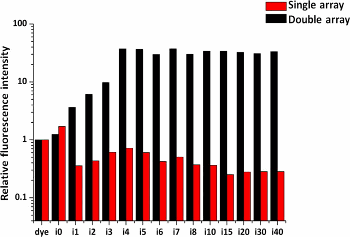-
Fluorescence enhancement in large-scale self-assembled gold nanoparticle double arrays
M. Chekini, R. Filter, J. Bierwagen, A. Cunningham, C. Rockstuhl and T. Bürgi
Journal of Applied Physics, 118 (23) (2015), p233107


DOI:10.1063/1.4938025 | unige:79113 | Abstract | Article HTML | Article PDF

Localized surface plasmon resonances excited in metallic nanoparticles confine and enhance electromagnetic fields at the nanoscale. This is particularly pronounced in dimers made from two closely spaced nanoparticles. When quantum emitters, such as dyes, are placed in the gap of those dimers, their absorption and emission characteristics can be modified. Both processes have to be considered when aiming to enhance the fluorescence from the quantum emitters. This is particularly challenging for dimers, since the electromagnetic properties and the enhanced fluorescence sensitively depend on the distance between the nanoparticles. Here, we use a layer-by-layer method to precisely control the distances in such systems. We consider a dye layer deposited on top of an array of goldnanoparticles or integrated into a central position of a double array of goldnanoparticles. We study the effect of the spatial arrangement and the average distance on the plasmon-enhanced fluorescence. We found a maximum of a 99-fold increase in the fluorescence intensity of the dye layer sandwiched between two goldnanoparticle arrays. The interaction of the dye layer with the plasmonic system also causes a spectral shift in the emission wavelengths and a shortening of the fluorescence life times. Our work paves the way for large-scale, high throughput, and low-cost self-assembled functionalized plasmonic systems that can be used as efficient light sources.

